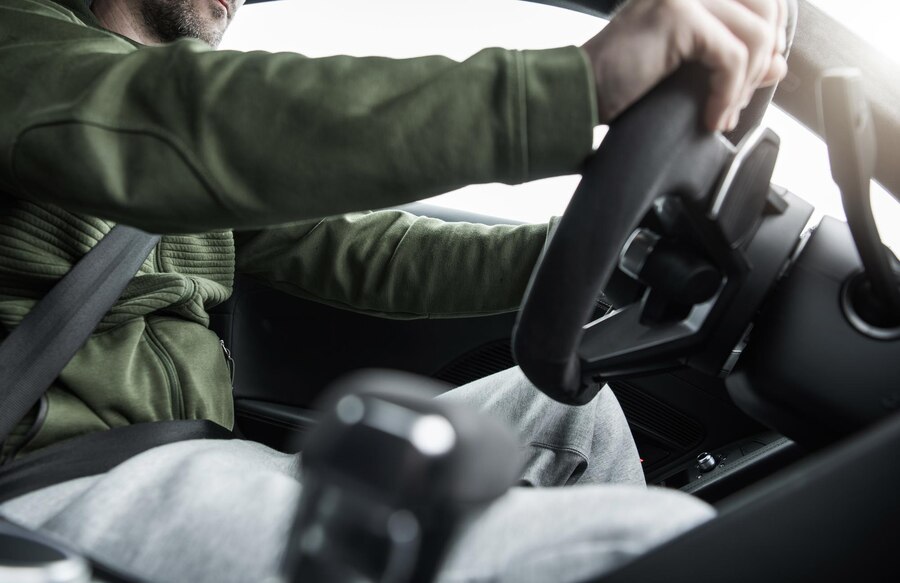Ways To Avoid A Car Accident Situation
by Abdul Aziz Mondal Automotive 20 June 2023

Did you know that every year, on average, 300 New Yorkers lose their lives due to injuries caused by motor vehicle accidents?
These fatalities specifically affect vehicle occupants, resulting in a rate of 1.6 deaths per 100,000 New Yorkers.
This statistic serves as a sobering reminder of the potential risks on the road and underscores the importance of taking proactive measures to prevent car accidents and ensure the safety of everyone on New York’s streets.
In this article, we will explore five essential strategies to help you avoid potential hazards and make your driving experience safer for yourself and others.
Adopting Defensive Driving Techniques

When it comes to avoiding car accidents, adopting defensive driving techniques is paramount.
Say, you’re driving on a busy highway and notice a vehicle rapidly changing lanes without signaling.
The best way to avoid a potential collision is to stay alert, stay safe from other vehicles, and anticipate potential hazards.
By doing things such as continuously scanning your surroundings through mirrors and paying attention to any blind spots, you’ll be able to anticipate any sudden movements or lane changes by other drivers and also allow for ample reaction time in case of sudden stops or emergencies.
Moreover, by eliminating distractions such as texting, phone calls, and eating, and by adhering to speed limits, traffic signals, and road signs, you’ll ensure your safety and the safety of others in traffic.
Practicing Proper Vehicle Maintenance
Regular vehicle maintenance ensures that your vehicle operates optimally and reduces the risk of accidents caused by mechanical failures.
To practice proper vehicle maintenance:
- Check if your tires are properly inflated to reduce the risk of skidding or losing control
- Inspect whether your brakes are in good condition
- Regularly check and maintain appropriate levels of engine oil, coolant, and other essential fluids
- Inspect and replace any malfunctioning lights, such as headlights, brake lights, and turn signals
By prioritizing vehicle maintenance and contacting professionals like LawSB for Car Accident for assistance when necessary, you can ensure that your vehicle is in optimal condition, reducing the chances of accidents caused by mechanical failures.
And remember: Proper vehicle maintenance not only contributes to your safety but also extends the lifespan of your vehicle and helps you avoid costly repairs in the long run.
By investing a little time and effort into regular maintenance, you can enjoy a smoother and safer driving experience.
Avoiding Impaired Driving
Driving under the influence of alcohol, drugs, or even drowsiness significantly impairs your judgment, reaction time, and overall driving abilities.
You can ensure your safety and that of others by designating a sober driver or using ride-sharing services when under the influence.
You should also prioritize sleep before embarking on long journeys, as fatigue can impair your focus and reaction time.
And last but not least, avoid multitasking when driving.
In other words, there should be no eating, applying makeup, or adjusting the radio in the meantime, as this can divert your attention and increase the risk of accidents.
By following these guidelines and avoiding impaired driving, you are making responsible choices and prioritizing safety over convenience or distractions.
Mindful Driving In Hazardous Conditions

If you’ve ever driven on a rainy day, you know just how heavy downpours can reduce the visibility on the road and increase the likelihood of accidents.
For this reason, it is important that you adjust your driving behavior to accommodate hazardous conditions.
Consider the following:
- Adapting to weather conditions: Reduce speed and increase following distances during rain, snow, fog, or other adverse weather conditions that affect visibility and road traction.
- Using headlights: Even during daylight hours, using your headlights can increase your visibility to other drivers and help prevent accidents.
- Anticipating road hazards: Watch out for potholes, debris, and construction zones. Adjust your speed accordingly and maintain a safe distance from other vehicles.
Utilizing Advanced Driver Assistance Systems (Adas)
The majority of car accidents are caused by human error or distractions, so it can be helpful to use technologies such as advanced driver assistance systems (ADAS) to act as an extra set of eyes and provide valuable alerts when needed.
These technologies contribute to an overall safer driving experience by utilizing sensors, cameras, and other assisting features to provide warnings to the driver.
Some of the commonly available ADAS features in modern vehicles are:
- Lane Departure Warning (LDW): This system alerts you if your vehicle starts to drift out of its lane unintentionally. It can help prevent accidents caused by drowsiness, distractions, or momentary lapses in attention.
- Forward Collision Warning (FCW): FCW uses sensors to monitor the distance between your vehicle and the one in front. If a potential collision is detected, the system provides an audible or visual warning, prompting you to take action.
- Automatic Emergency Braking (AEB): AEB goes a step further by automatically applying the brakes if it senses an imminent collision and the driver fails to respond in time. This feature can mitigate or even prevent accidents caused by inattention or delayed reactions.
- Blind Spot Detection (BSD): BSD uses sensors to detect vehicles in your blind spots. It provides a visual or audible alert if you attempt to change lanes when another vehicle is present, helping you avoid collisions during lane changes.
- Adaptive Cruise Control (ACC): ACC maintains a set speed and also adjusts the vehicle’s speed to match that of the vehicle ahead, maintaining a safe distance. It reduces the need for constant acceleration and braking, enhancing safety and reducing driver fatigue on long journeys.
Remember, the ADAS features are not a substitute for attentive driving.
Instead, they are designed to complement your driving skills and provide an additional layer of safety on the road.
So, familiarize yourself with their operation and limitations and read the vehicle’s manual to understand how each system functions to make the most of these safety technologies.
Conclusion
Remember, safety on the road is a shared responsibility.
By implementing these strategies and making conscious choices behind the wheel, you not only protect yourself but also contribute to the well-being of everyone around you.
So, take these tips to heart, stay vigilant, and let’s strive together for a future where the number of lives lost to car accidents decreases, and where we can all enjoy the freedom of safe and secure travel.
Stay safe and drive responsibly!
Read Also:



































































































